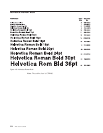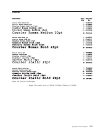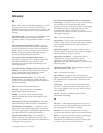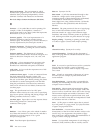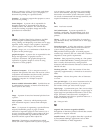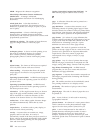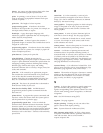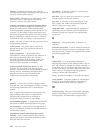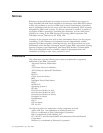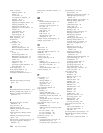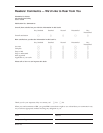software. Programs, procedures, rules, and any
associated documentation pertaining to the operation of
a system. Contrast with hardware.
source format. The format of an AFP resource, other
than fonts, used by AFP resource management
programs. Contrast with object format.
spooling (simultaneous peripheral operation online).
(1) The use of auxiliary storage as a buffer storage to
reduce processing delays when transferring data
between peripheral equipment and the processors of a
computer. (2) The reading of input data streams and
the writing of output data streams on auxiliary storage
devices, concurrently with job execution, in a format
convenient for later processing or output operations.
syntax. The rules and keywords that govern the use of
a programming language.
system printer. The printer that is used for any
printed output that is not specifically directed to
another printer.
system programmer. A programmer who is
responsible for writing programs for the functions of
the computer operating system and who has a
thorough knowledge of the operating system. The
system programmer installs and maintains AFP
software in the System/390 environment.
Systems Network Architecture (SNA). In IBM
networks, the description of the layered logical
structure, formats, protocols, and operational sequences
that are used for transmitting information units
through networks, as well as controlling the
configuration and operation of networks.
T
terminal. A device that is usually equipped with a
keyboard and some kind of display, capable of sending
and receiving information over a communication
channel.
text. A graphic representation of information on an
output medium. Text consists of alphanumeric
characters and symbols that are arranged in
paragraphs, tables, columns, or other shapes.
text-formatting program. A program that determines
the manner in which data will be placed on a page.
text orientation. A description of the appearance of
text as a combination of inline and baseline directions
and character rotation.
Transmission Control Protocol/Internet Protocol
(TCP/IP). A set of communications protocols that
support peer-to-peer connectivity functions for both
local and wide area networks.
type family. A collection of fonts of a common type
face that vary in size and style.
type font. Type of a given size and style; for example,
10-point Sonoran Serif roman medium.
type face. A collection of fonts all having the same
style, weight, and width; each font differs from the
others by point size or type family.
typographic font. A typeface originally designed for
typesetting systems. Contrast with mixed-pitch font,
uniformly spaced font. Synonym for proportionally
spaced font.
U
underscore. A line printed under a character. To
underline.
uniformly spaced font. A font in which the characters
have the same character increment. Synonymous with
monospaced fonts. Contrast with proportionally spaced
font and typographic font.
V
variable data. (1) In programming languages, a
language object that may take different values, one at a
time. The values of a variable are usually restricted to a
certain data type. (2) A quantity that can assume any of
a given set of values. (3) Used to represent a data item
whose value can be changed while the program is
running. Contrast with constant data.
vector. In computer graphics, a directed line segment.
vector graphics. Computer graphics in which display
images are generated from display commands and
coordinate data. Contrast with raster graphics.
W
word processing. The entry, modification, formatting,
display, and printing of text on personal computers,
microprocessors, and stand-alone word processors.
132 APU User’s Guide



